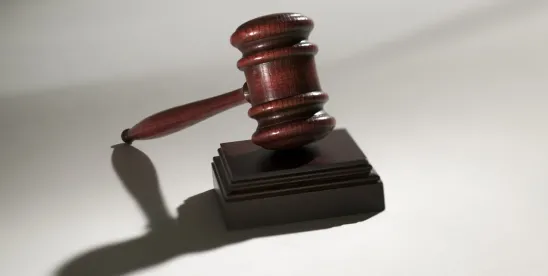Last week, the Third Circuit issued a decision that could have major ramifications for sentencing in federal fraud cases. United States v. Nagle dealt with a fraud perpetrated against the Department of Transportation’s Disadvantaged Business Enterprise (“DBE”) program. The DBE program requires states that receive federal transportation funds to set goals for the awarding of construction contracts to certified DBEs. To receive DBE certification, a firm must be a small business that is majority owned and controlled by women or minority group members. In Nagle, a Third Circuit panel addressed the calculation of loss amount under the United States Sentencing Guidelines, where a firm fraudulently has held itself out as a DBE to win a state contract, but then in fact performs the contracted work.
Defendants Joseph Nagle and Ernest Fink co-owned a Pennsylvania company called Schuylkill Products Inc. (“SPI”), which manufactured large concrete beams used in highway construction. SPI entered into a fraudulent arrangement with a certified DBE called Marikina, a small business owned by an American of Filipino descent. The scheme called for Marikina to bid on Pennsylvania highway construction projects. Whenever Marikina won a bid, SPI would step in and perform the construction work using its own workers and equipment. SPI would pay Marikina a fixed fee and then retain all profits from the projects. To conceal the scheme, SPI conducted its correspondence with fake Marikina letterhead, provided its employees with fake Marikina business cards, and even put magnetic signs with Marikina’s logo on the sides of SPI’s vehicles. Significantly, it was undisputed that SPI had in fact performed the work for which Marikina had bid. The only fraud was misrepresentation as to DBE status.
At sentencing, a dispute arose over the calculation of loss amount under U.S.S.G. 2B1.1(b). The government argued that the loss amount should be the entire face value of fraudulent DBE contracts, which the prosecution characterized as “government benefits,” as discussed in Application Note 3(F)(ii). According to this Note, the loss amount in “government benefits” cases is “the value of the benefits obtained by unintended recipients.” The defendants, on the other hand, argued that the DBE contracts were not “government benefits,” and that the loss calculation should follow the standard rules for fraud cases, which provide for an offset equal to the fair market value of the services the defendants performed. See Note 3(A). Since Nagle and Fink had performed the contracts in full, they maintained that the loss amount should be $0. The sentencing court sided with the government and calculated the defendants’ offense levels based on the face value of the contracts.
On appeal, the Third Circuit noted that it found the government to have the more persuasive argument, since the DBE program is focused on the identities of those performing work, not merely on the monetary value of the work itself. Yet, in a rather dramatic about-face, the Court proceeded to hold that regardless of whether Note 3(F)(ii) applied, the sentencing court should have considered the impact of Note 3(E)(i), which requires an offset against loss amount for the fair market value “of property returned and services rendered” by the defendant. The Court rejected the government’s argument that the 3(E)(i) offset does not apply to the “special rule” in 3(F)(ii). Therefore, even assuming that the DBE contracts were “government benefits,” the defendants were still entitled to an offset equal to the fair market value of the work they performed.
Though the Nagle decision explicitly governs DBE cases, it could become an important precedent for defendants in cases dealing with other sorts of fraud. Nagle makes clear that the 3(E)(i) offset can apply to reduce loss amount even in the face of apparently conflicting guidelines provisions. Yet, significantly, 3(E)(i) only provides an offset for money, goods, or services returned “before the offense was detected.” Perpetrators who return money to their victims after a fraud has been uncovered will obtain no benefit under this provision.




 />i
/>i
